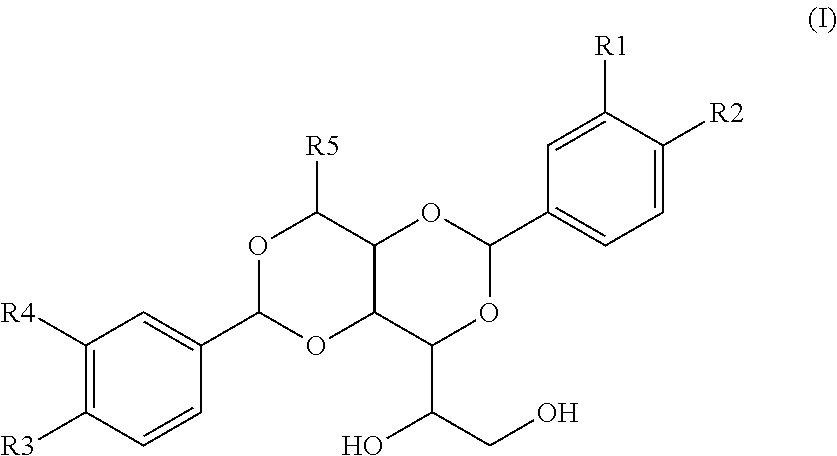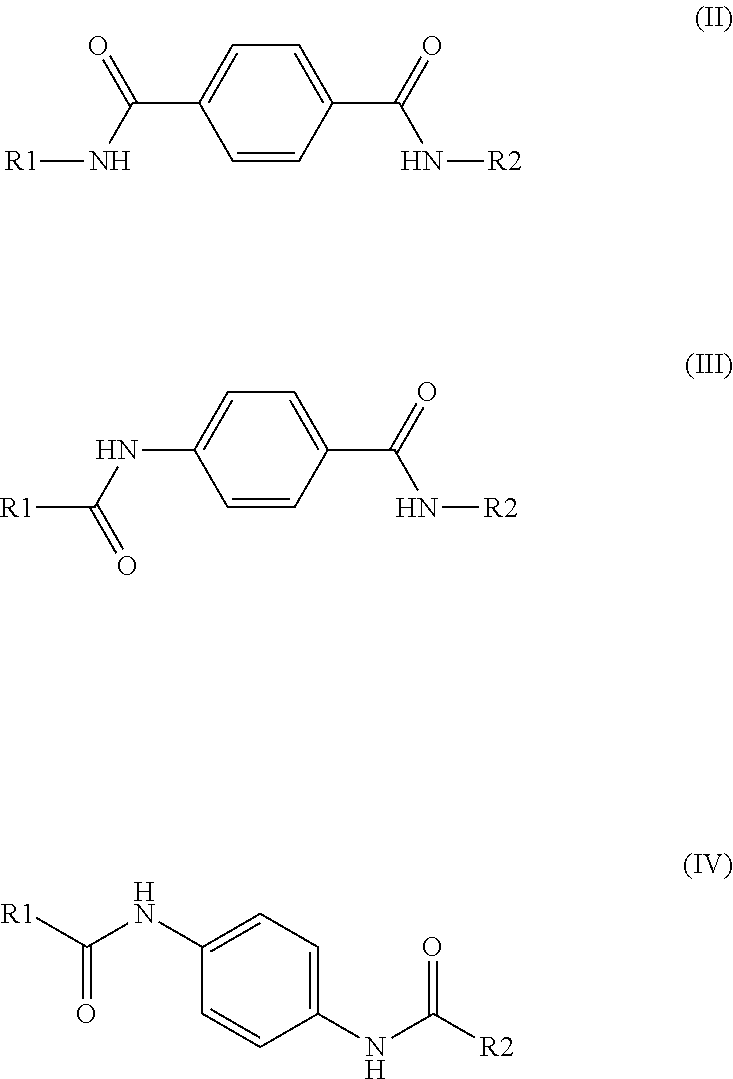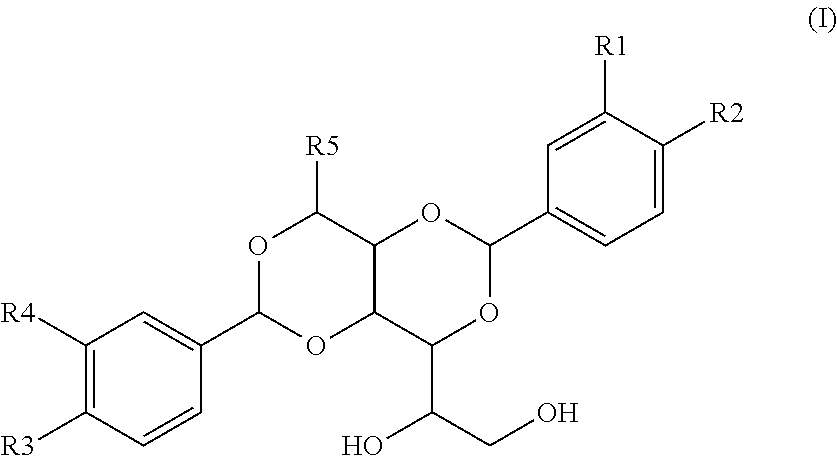Multilayer films and packages formed from same
a technology of multi-layer films and packages, applied in the field of multi-layer films and to packages, can solve the problems of deterioration of optical properties, unsatisfactory recyclability of packaging, and less desirable thermal properties of packages, so as to improve optical properties, improve heat resistance, and achieve desirable optical properties.
- Summary
- Abstract
- Description
- Claims
- Application Information
AI Technical Summary
Benefits of technology
Problems solved by technology
Method used
Image
Examples
example 1
Making N,N′-Dicyclohexyl-1,4-benzenedicarboxamide
[0100]
[0101]N-methylpyrrolidone (NMP) was stirred for 1 day over CaH2 and finally distilled off. Triethylamine was treated in a similar manner. Cyclohexylamine was stirred over KOH and distilled off. 5.5 mL of cyclohexylamine, 0.1 g of anhydrous LiCl, and 25 mL of triethylamine were dissolved in 100 mL of dry NMP under inert atmosphere. 4.06 g of terephthaloyl chloride were added to the solution and subsequently stirred for 2 h at 75° C. Then the solution was cooled to room temperature and poured into ice-water. The precipitate was filtered off, washed several times with water. The crude product was recrystallized from DMF, yielding 4.03 g of N,N′-Dicyclohexyl-1,4-benzenedicarboxamide as white powder.
example 2
cyclohexylmethyl)-1,4-benzenedicarboxamide
[0102]
[0103]Triethylamine was stirred for 1 day over CaH2 and finally distilled off. Tetrahydrofuran (THF) was refluxed for three days over CaH2, distilled, refluxed for another three days over potassium and finally distilled again. 3.75 mL of cyclohexyanemethylamine, 0.1 g of anhydrous LiCl, and 15 mL of triethylamine were dissolved in 150 mL of dry THF under inert atmosphere and cooled to 0° C. 2.66 g of terephthaloyl chloride were added to the solution and subsequently refluxed for 12 h. Then the solution was cooled to room temperature and poured into ice-water. The precipitate was filtered off, washed several times with water. The crude product was recrystallized from DMSO, yielding 4.25 g of N,N′-Bis(cyclohexylmethyl)-1,4-benzenedicarboxamide as white needles.
example 3
cyclohexylethyl)-1,4-benzenedicarboxamide
[0104]
[0105]Triethylamine was stirred for 1 day over CaH2 and finally distilled off. THF was refluxed for three days over CaH2, distilled, refluxed for another three days over potassium and finally distilled again. 3.25 mL of cyclohexyaneethylamine, 0.1 g of anhydrous LiCl, and 15 mL of triethylamine were dissolved in 150 mL of dry THF under inert atmosphere and cooled to 0° C. 2.03 g of terephthaloyl chloride were added to the solution and subsequently refluxed for 12 h. Then the solution was cooled to room temperature and poured into ice-water. The precipitate was filtered off, washed several times with water. The crude product was recrystallized from DMSO, yielding 3.79 g of N,N′-Bis(cyclohexylethyl)-1,4-benzenedicarboxamide as white needles.
PUM
| Property | Measurement | Unit |
|---|---|---|
| pressure | aaaaa | aaaaa |
| seal strength temperature | aaaaa | aaaaa |
| density | aaaaa | aaaaa |
Abstract
Description
Claims
Application Information
 Login to View More
Login to View More - R&D
- Intellectual Property
- Life Sciences
- Materials
- Tech Scout
- Unparalleled Data Quality
- Higher Quality Content
- 60% Fewer Hallucinations
Browse by: Latest US Patents, China's latest patents, Technical Efficacy Thesaurus, Application Domain, Technology Topic, Popular Technical Reports.
© 2025 PatSnap. All rights reserved.Legal|Privacy policy|Modern Slavery Act Transparency Statement|Sitemap|About US| Contact US: help@patsnap.com



